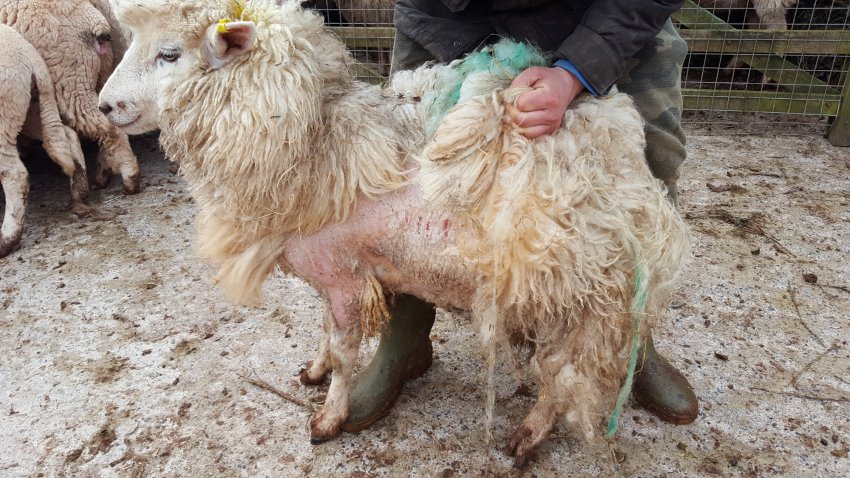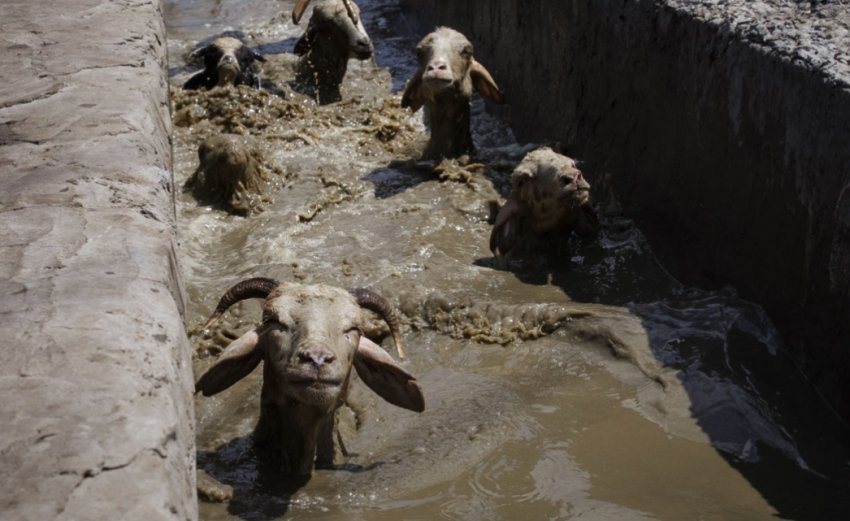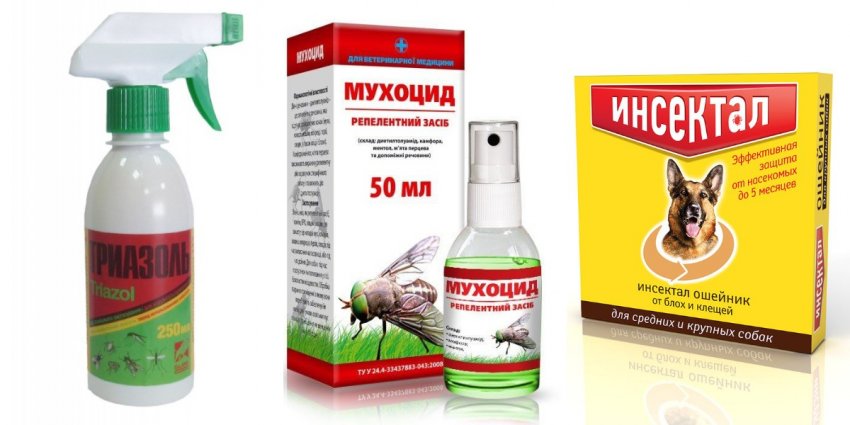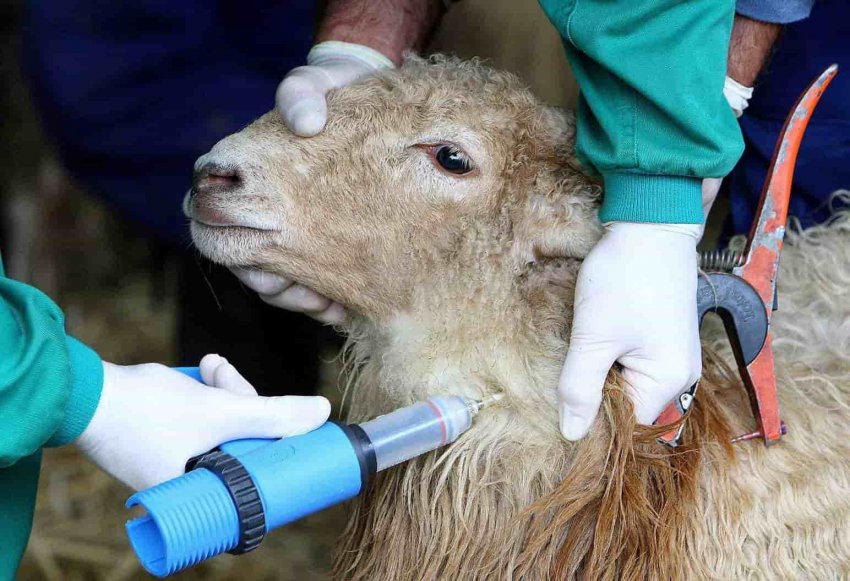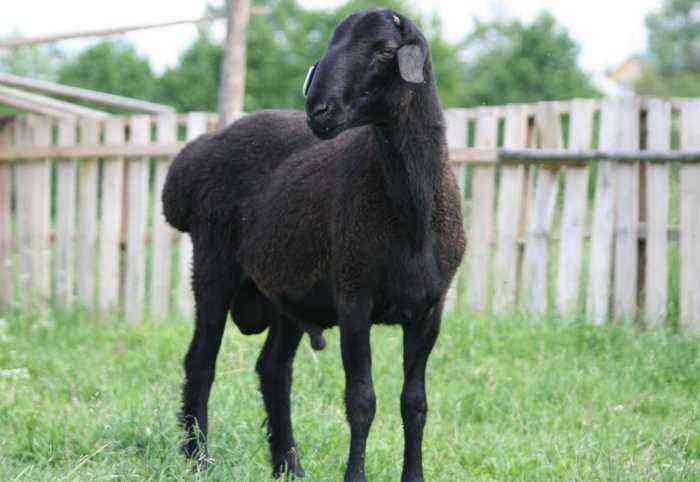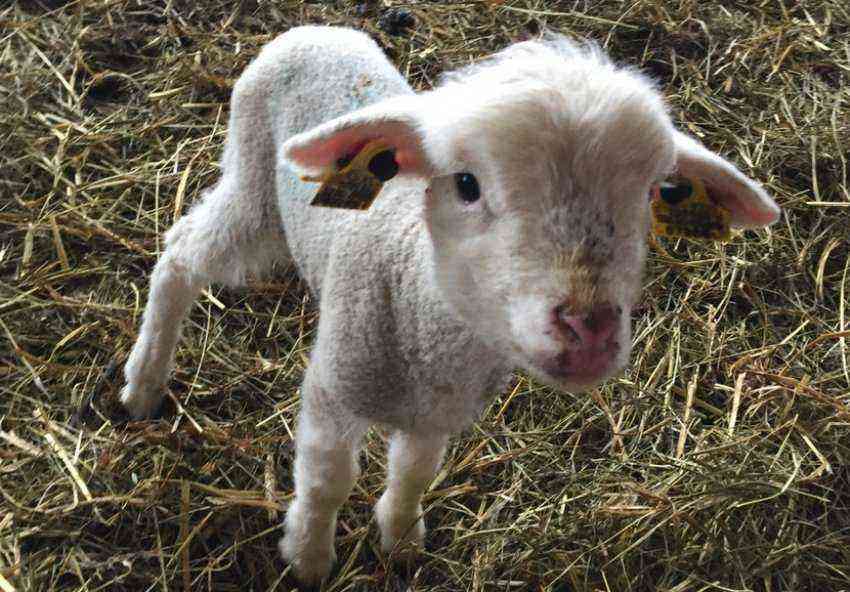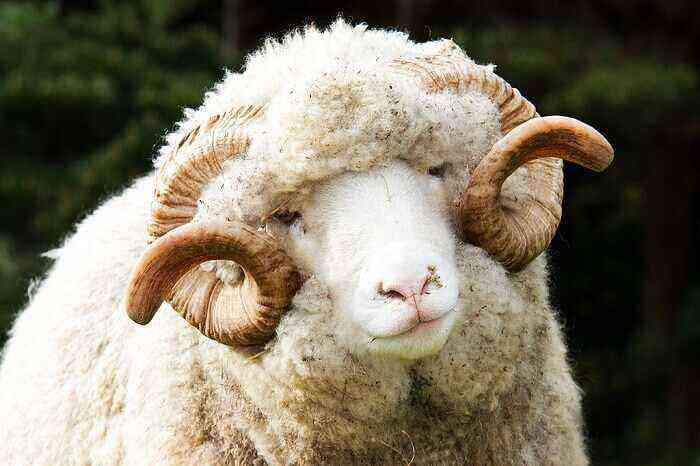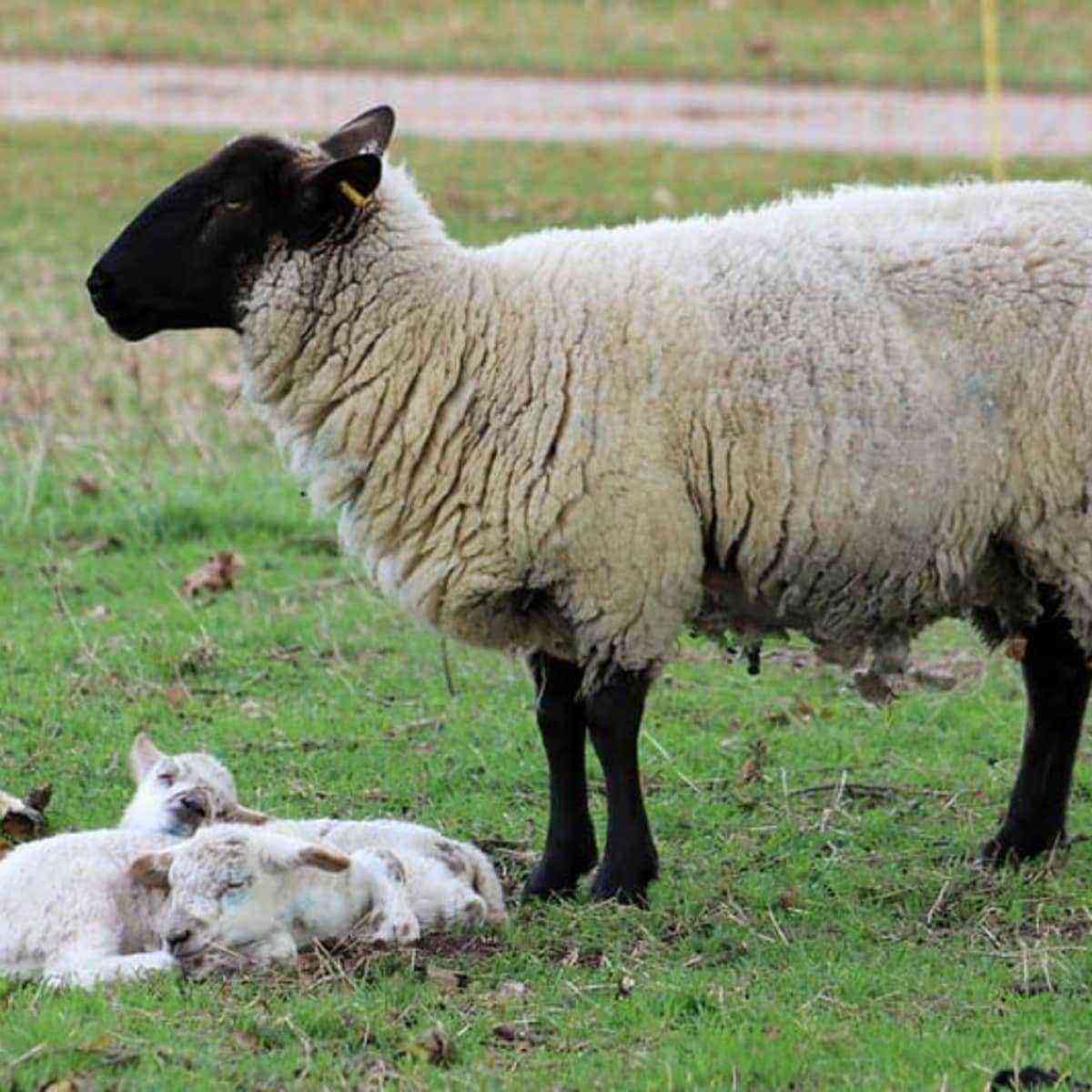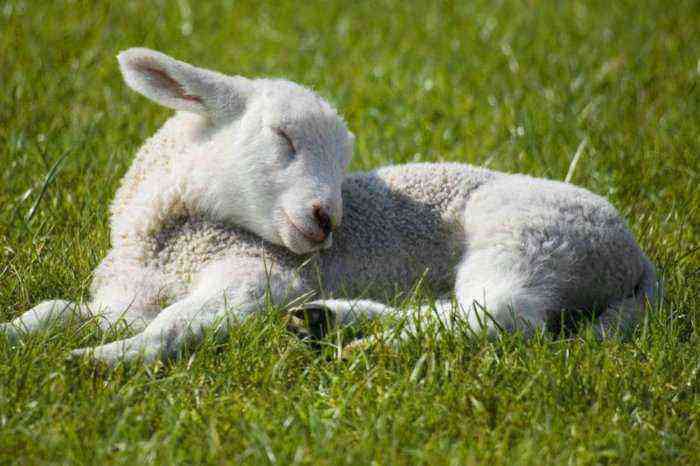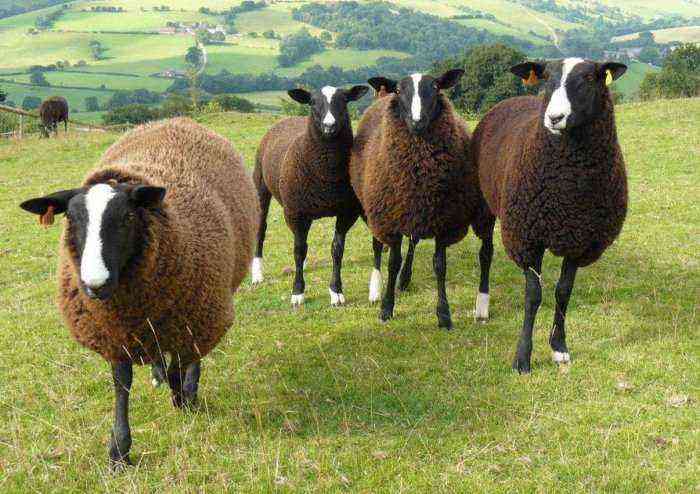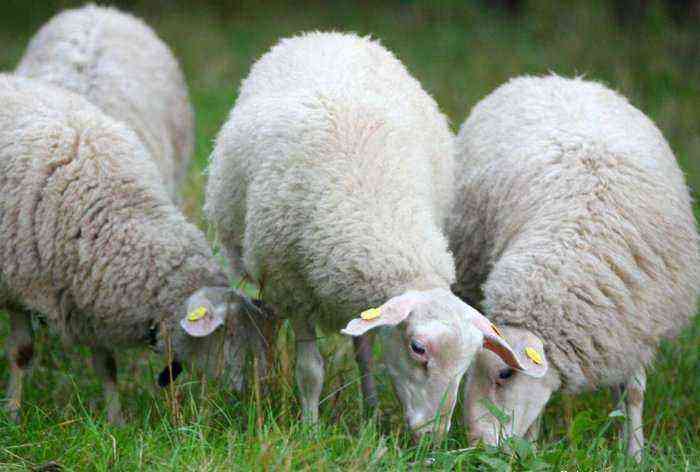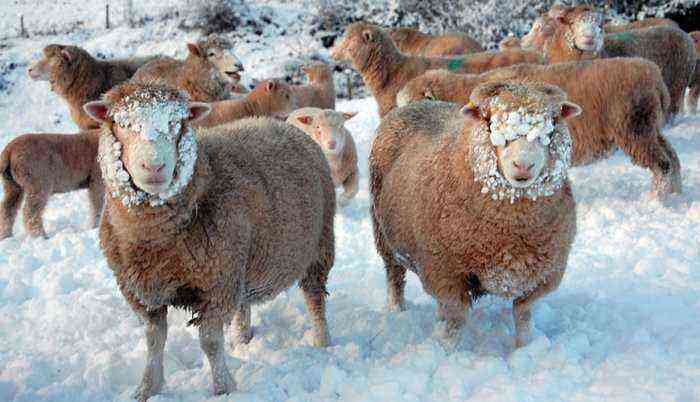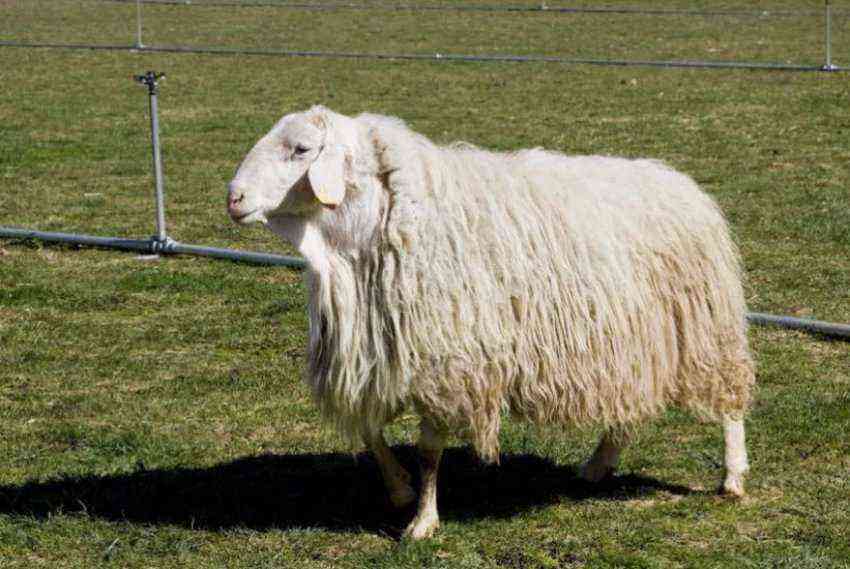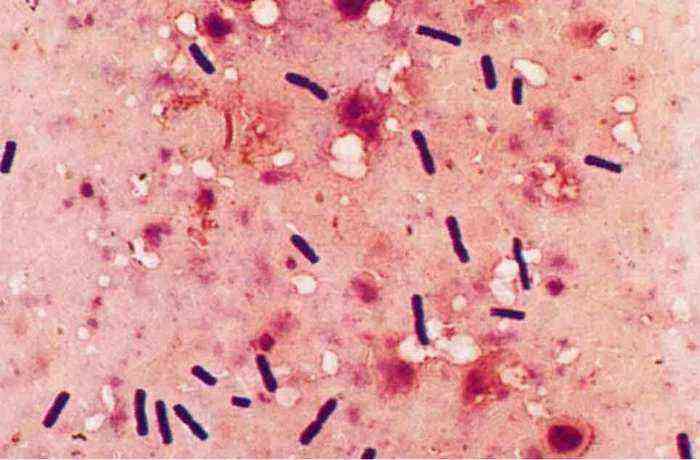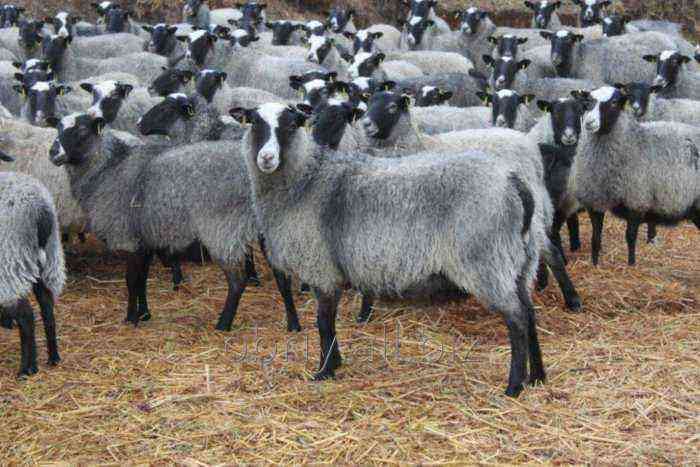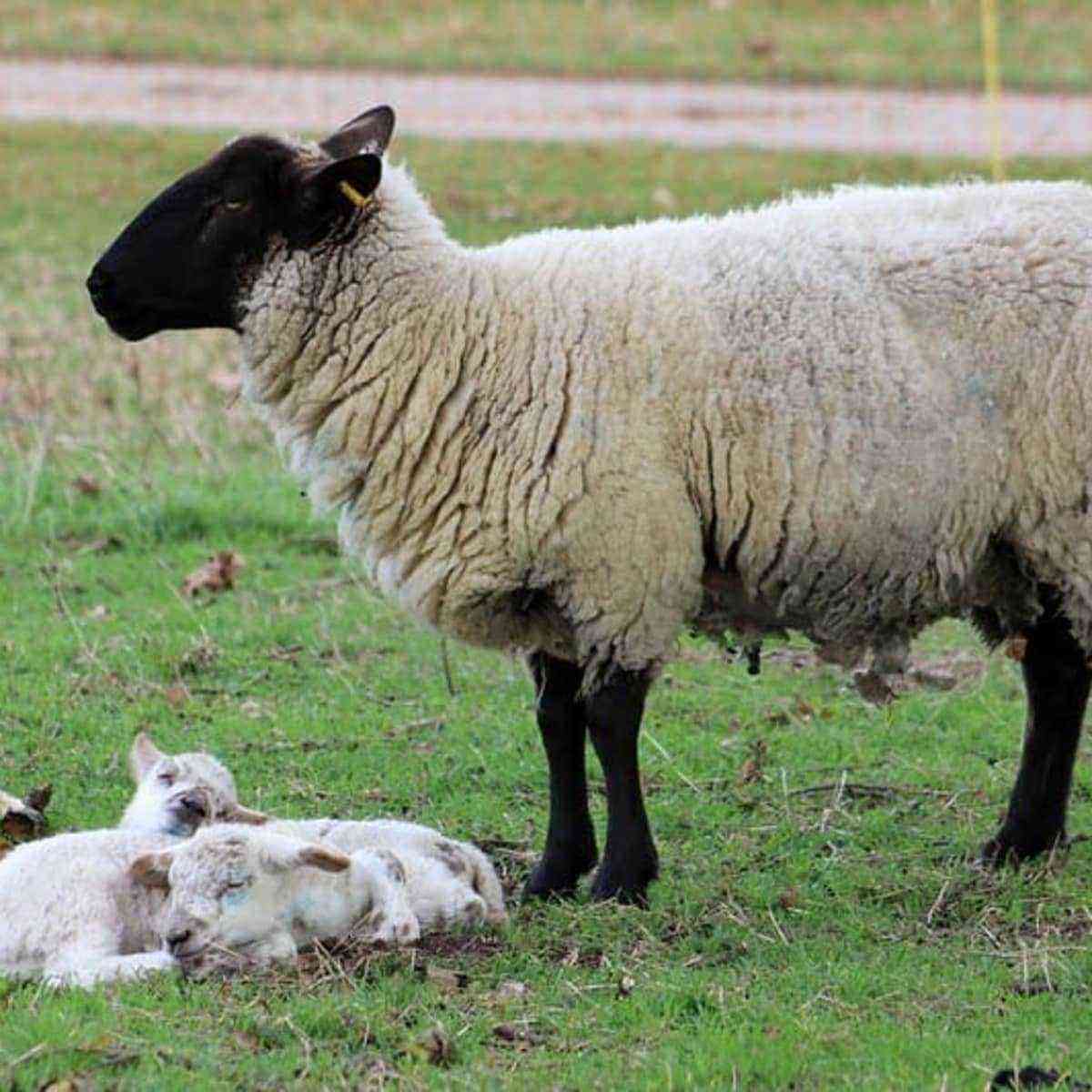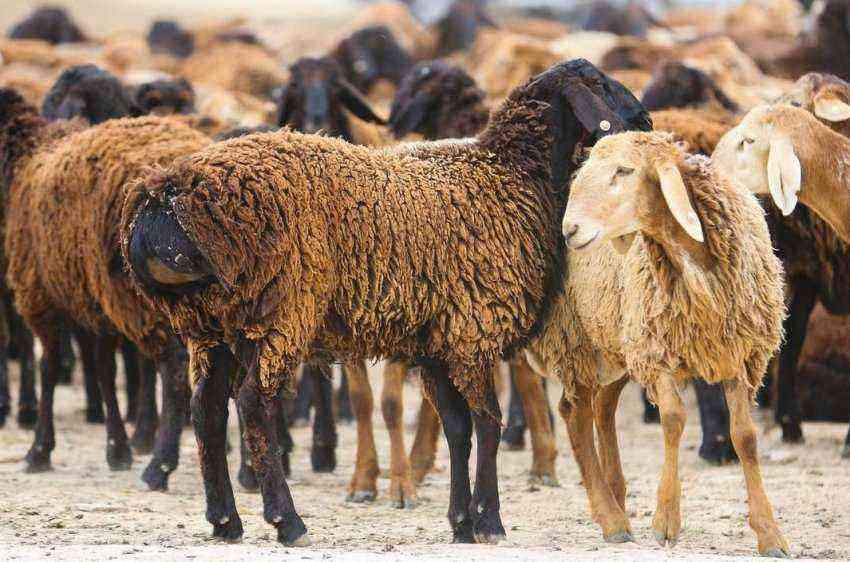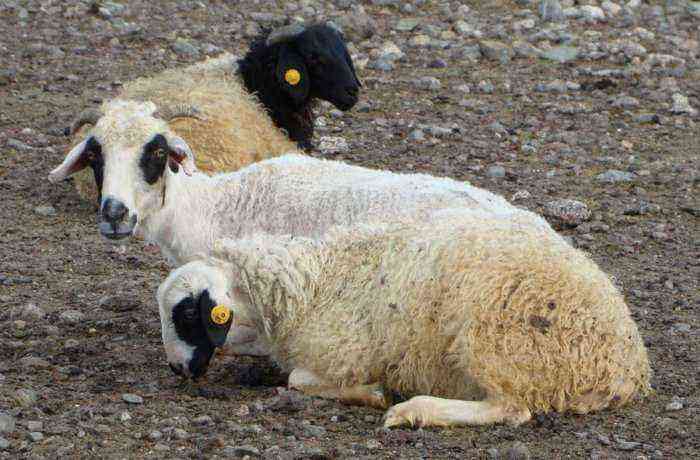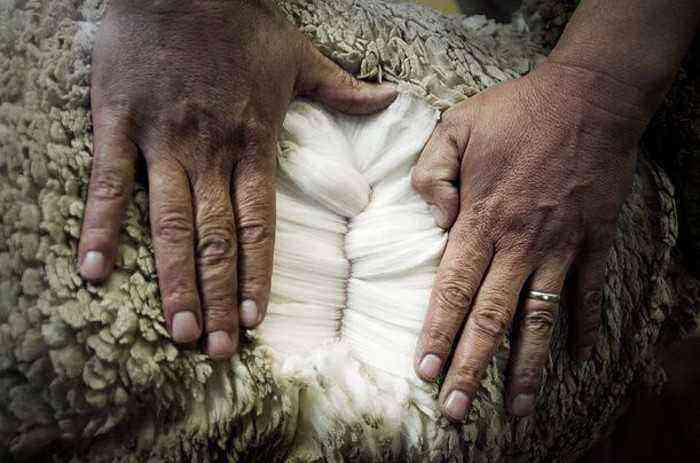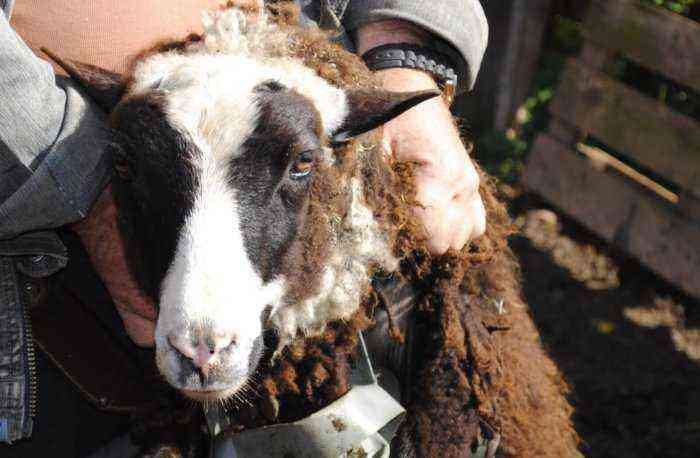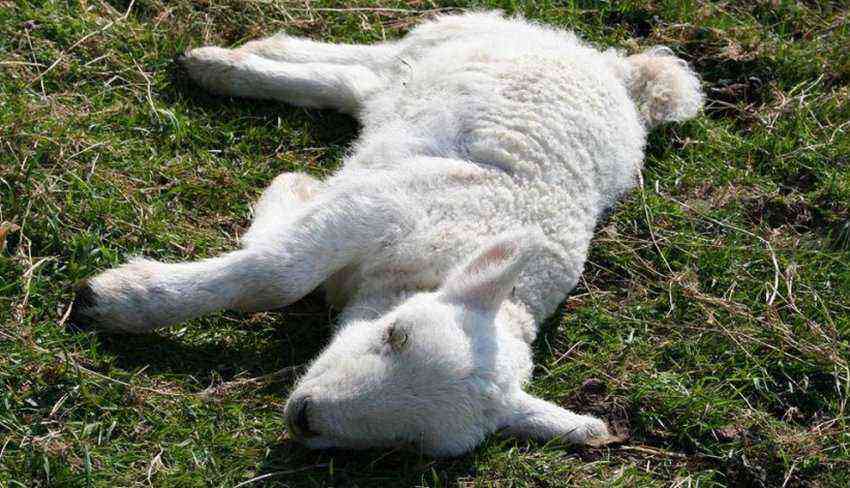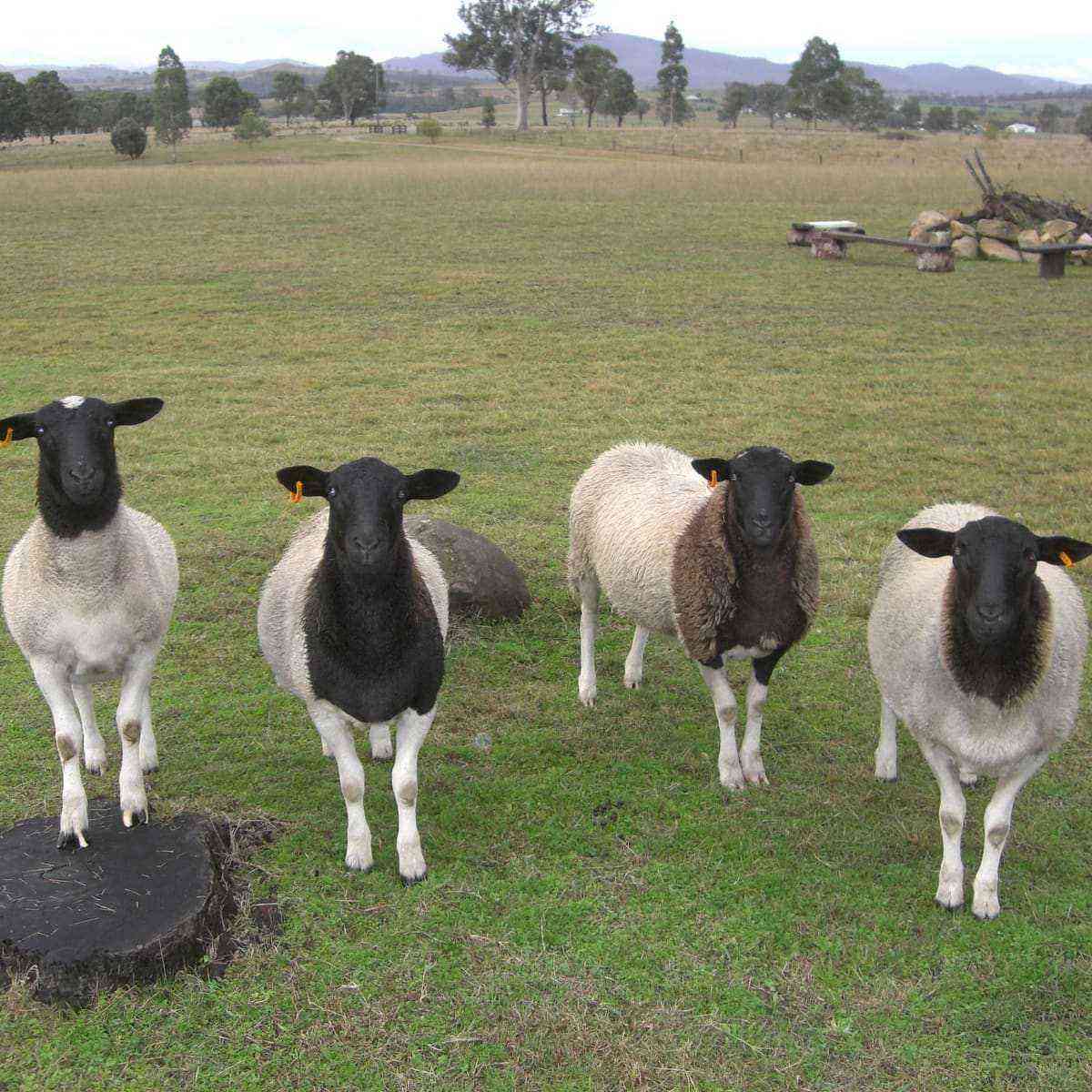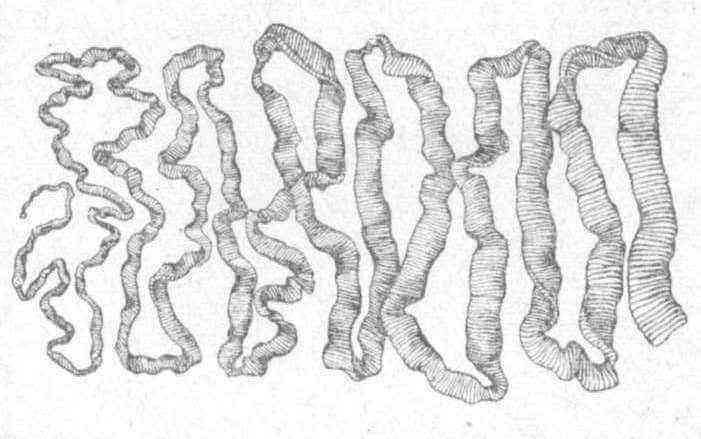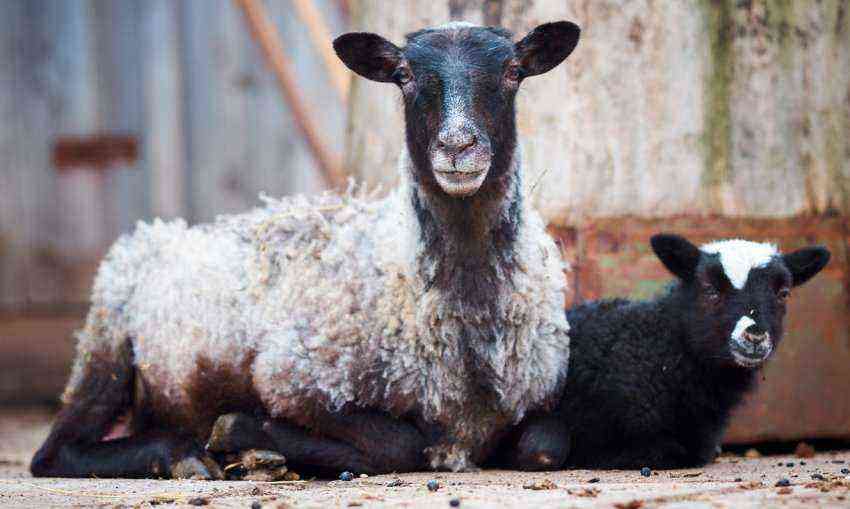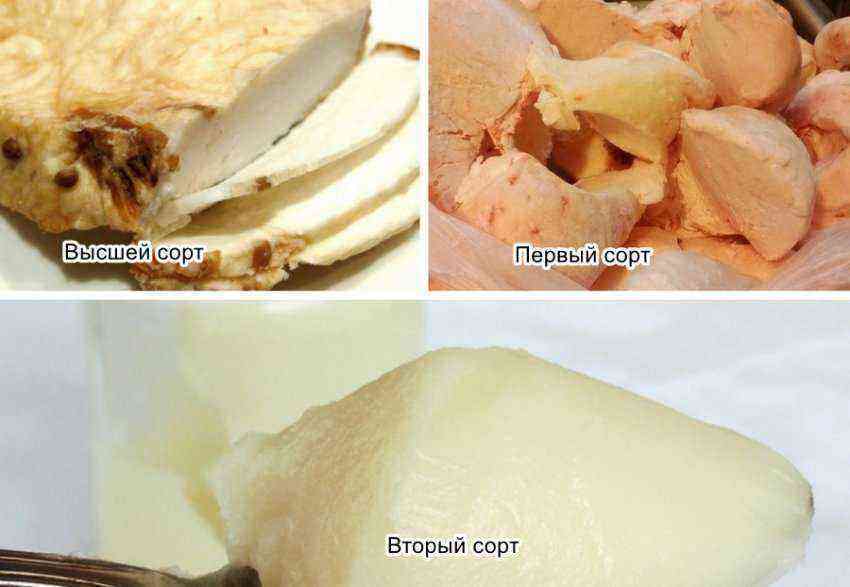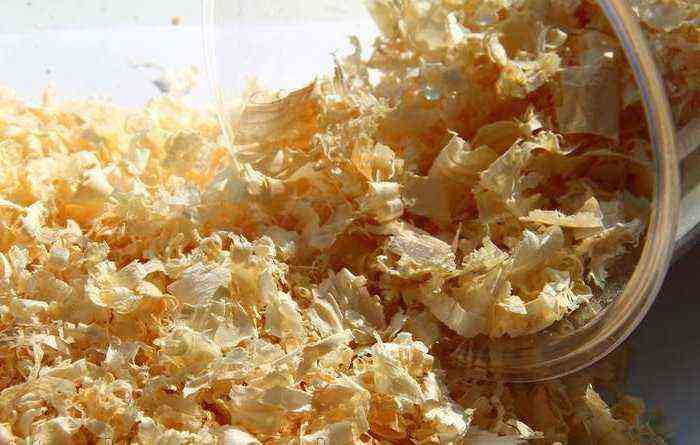Sheep, like other animals, require quality care, as they are prone to various types of diseases, infections, and insect attacks that harm them and sometimes cause unpleasant outcomes.
The spring period is especially dangerous for sheep, since it is during the warm season that ixodid ticks appear throughout the country, which become a real problem for the owners. As a result of the attack of parasites, the amount of milk and wool is reduced. Animals lose weight, general health deteriorates. Therefore, it is very important to know what effective methods to use for the treatment and treatment of sheep from ticks.
Ixodid ticks, species
Ixodid ticks are popularly called encephalitis because they carry encephalitis. Parasites are carriers of other dangerous diseases, living on the skin of an animal. They make their way to the victim through the plants. The most popular species are taiga, dog, steppe, chicken ticks.
On the skin of sheep, several types of insects can parasitize at once. The Ixodid tick is most commonly found among young lambs of the coarse-wooled sheep breed. Parasites feed on the subcutaneous layer. They gnaw through passages under the skin, after which they lay eggs there. You can find them on the ears, eyes, nose or lips.
Psoroptosis
The skin mite is considered the most common persistent pest of sheep. It parasitizes on the epidermal layer of the skin and lives on it. The body of such a tick has an oval shape. The arthropod is distinguished by its piercing mouth and long limbs with suction cups.
Psoroptes ovis: a – female from the ventral side (according to M. V. Shustrova); b – male from the ventral side (according to M. V. Shustrova)
Parasites break through the layer of the skin, after which they suck out the subcutaneous fluid and blood from the lymph. The vital activity of this tick is slightly different from that of the ixodid. They do not gnaw passages under the skin, but live on it. They are localized mainly in the region of the sacrum and sides.
Chorioptosis
The body of such mites is oblong-oval in shape. This species feeds on keratinized particles of the skin, and also damages the hairs of the coat. Pests bring discomfort to animals, provoking severe itching in them. Chorioptoses do not pose a health hazard. However, due to the movement of parasites on the skin of the whole body, the nerve endings are irritated, and the animal begins to itch very much.
Such a tick is located mainly in the limbs. You can find it by looking into the thick folds of the epidermis. Parasites are very exhausting animals, which, due to acute scabies, beat the limbs to the blood. As a result of this, the sheep begins to limp, the weight is significantly reduced, it becomes inactive and devoid of strength.
How does tick infestation occur?
The most common among all ticks is psoroptosis. Infection occurs mainly as a result of direct contact of an infected animal with healthy ones.
Did you know? The saliva of the tick contains painkillers that instantly affect the nerve endings. Therefore, the process of biting for the victim goes unnoticed.
tick infestation
First of all, the result of the disease is a violation of the rules for caring for sheep and improper conditions for keeping the flock. This refers to the violation of sanitary standards, poor nutrition, the transfer of various infectious diseases.
Young lambs are usually infected from adult rams and ewes. It is important to identify the infection in time and take appropriate measures to combat them. To do this, you need to familiarize yourself with the symptoms of the disease.
symptomatology
The main signs and symptoms of insect infestation are:
- severe itching. It is noticeable how sheep begin to gnaw their own skin, rub against hard objects;
- pronounced redness and scratches on the skin appear on the neck, tail area and sides;
- the skin on the combed areas looks rough, the hair in this part falls out in shreds, and the places become bare;
- abrasions and cracks appear;
- fallen off tufts of hair hang around the affected area.
Course of the disease
There are three forms of the disease:
- latent;
- chronic;
- sharp.
Lambs and adult flocks react very poorly to parasites. All the time itching on various objects, and because of this, wounds and skin irritations appear, which begin to rot. The symptoms are most aggravated by long hauls and in wet weather, when the humidity is high. The acute form is considered the most dangerous for animals.
Did you know? Ticks lead the list of all arthropods in terms of the variety of transmitted infections. More than 100 viruses and dozens of bacterial species have been found in nature.
Sheep suffer greatly from infection, have poor appetite, their body is completely depleted, as a result of which a lethal outcome is possible. In the case when the infection was not detected, the entire body of the sheep will be affected by the tick after a few months. The chronic course of the disease usually occurs in young lambs. They lose weight, their hair falls off.
In contrast to the acute form, with chronic infection, itching appears less, but is present.
The period of infection most often falls in the summer. Before the onset of frost, the hair begins to grow, and the disease flows into an acute form.
The latent form of the disease is characterized by mild symptoms. This form occurs exclusively in adult sheep at high outdoor temperatures, when parasites hide from the heat in thick folds of skin. With this form, a slight itching appears.
Video: Treatment of sheep from a runt mite
Methods of fighting mites
After diagnosing and determining infection in sheep, immediate action must be taken. There are several ways to deal with parasites.
contact methods
Contact methods of combating ticks consist in direct contact of a poisonous preparation with a pest. Therefore, the funds are used exclusively for external use. Animals are treated with sprays, powders, or bathed in a drug solution. The method of treatment depends on weather conditions and time of year.
Summer (animal bathing)
Best of all, drugs affect parasites in the warm season. Do this immediately after shearing the sheep, on bare skin. Medications based on diazinon are considered effective.
The most famous drugs:
- Hexachlorane;
- Foxim;
- Butox;
- Cypermethrin;
- Entomason.
The drug must be dissolved in water and bathed for 30-60 seconds. The procedure must be carried out twice with an interval of two weeks. The dosage of the drug is 300–500 g per adult sheep. In order to process infected sheep, you need to pick up a large trench.
Before bathing, you need to dilute the drug in a container, after which it is good to treat each animal in a solution. During the treatment period, it is necessary to strictly observe the doses, concentrations and methods of processing animals, as well as the rules of personal hygiene.
Winter (sprays, powders)
In the cold season, drugs are used in the form of various sprays or powders. Sprays such as Triazol, Muhotsid and Insectal powders are considered very common. Treat the animal throughout the body. The drug should be applied to a healthy dry surface in places that will be inaccessible for licking.
For every 10 cm of the skin or hair of the animal, you need to spray the drug for 5-7 seconds. However, this method does not give a 100% result. Most often, pests or their larvae remain and continue to multiply. This procedure is carried out 2-3 times with an interval of 10-12 days.
Injections
When a simple treatment with sprays or powders is not effective enough in winter, they usually move on to the next method – injections. Vaccinations have a strong effect on the body of the animal. Therefore, they should be used with caution and in exceptionally neglected cases. It is also important to select only high-quality drugs.
Ivermek and Iverlong
The main element of suitable preparations for injection is invermectin. And the most popular drugs are Ivermek and Iverlong. Iverlong is used for processing once. It is necessary to prick in the area of the scapula under the skin with the expectation of 0,2 ml per 10 kg of body weight.
Vaccinations contribute to the destruction of parasites and their larvae. In the future, the agent can be replaced with another analogue of Ivermek. The medicine is much cheaper, which will help reduce financial costs. Dosage 1 ml per 50 kg of animal weight or 200 mcg of the drug per 1 kg of body weight.
The disadvantage of this treatment is that the decay products of the poisonous elements of the drug are excreted from the body of the sheep for a rather long period. It may take more than three months after the end of the drug. Therefore, it is not advised to consume sheep’s milk or meat during the treatment period.
Important! Before using a chemical preparation to protect the herd from ticks, you need to carefully study the instructions. There are usually given examples of the impact on the animal.
Tick control in lambs
Little lambs are susceptible to pest infestation no less than adult rams and sheep. Therefore, starting from the age of 2 months, it is possible to treat animals from parasites. However, each method has its own distinctive features. It is important to familiarize yourself with them before the direct processing of babies.
Features of contact processing of lambs
The contact method of processing is used both for adult animals and for cubs. However, in the summer, all animals should not be bathed in the same container, since the doses of drugs containing diazinon for the same amount of water are different.
The reason is that the body weight of the cubs is much less than that of an adult sheep. Based on the weight of the lamb, you need to select the optimal amount of the drug, which is indicated in the instructions and carry out the processing. The process of destroying pests on the body of lambs and adult sheep is no different.

In winter, when using sprays and powders, it is also important to follow the instructions and use the right amount of the medicinal substance for one animal.
Injections
Injections are also acceptable for lambs. However, as with contact methods of control, it is important to adhere to the correct dosage. Babies need to be pricked under the skin. The dosage of the drug should be about 10–20 cm³. The injection is given once.
Folk remedies for the fight against ticks
Farmers often prefer methods that are less hazardous to animal health. So, instead of harmful chemicals, they use simple folk remedies. They are used for both young and adult sheep. Such methods are considered absolutely harmless to animals and often prove to be quite effective.
Important! When a tick is found in an animal, it is purposely not immediately unhooked from the skin, oil is dripped onto the tick and left for several minutes. An hour later, not a single parasite will remain on the body of the sheep.
A few examples of folk methods of dealing with ticks:
- To get rid of parasites, use lavender, geranium or various aromatic oils. To do this, you need to process the entire body of the animal, dripping oil on the skin or rubbing it with a plant. The mites can’t stand the strong odor and die.
- You can also use regular vegetable oil. To do this, you need to generously smear them with a sheep, paying special attention to the groin area and ears.
- Machine oil can also be used as a treatment. However, they do not need to coat the entire body, they need to apply the product in wide strips over the body and groin.
- A mixture of tar with vegetable oil also gives a good effect. You also need to apply the product in stripes.
- A very simple, but no less effective method is to apply oil, detergent with cream. To do this, you can use a shower gel or shampoo. This method has the advantage of being very easy to rinse off.
Prevention of diseases and infections
In order to prevent infection of livestock with ticks, it is important to adhere to safety measures and carry out regular and timely prevention. The rules for keeping and caring for animals are not at all complicated, but they will help prevent disease and maintain the productivity and livelihoods of the flock.
Infection prevention rules:
- regularly conduct a thorough inspection of animals. If parasites are found, isolate the sheep from the flock;
- consult with a veterinarian, undergo an examination by a specialist;
- before sending the livestock for walking, daily, as a preventive measure, the animals are rubbed with mint or wormwood;
- during the absence of sheep, it is necessary to carry out high-quality processing of their abode: it is necessary to remove all manure from the stall from the premises, as well as to disinfect the places where the flock is kept;
- when new heads appear, keep them away from the flock for some time, until a complete examination;
- in case of infection of a part of the flock, healthy sheep should also be treated;
- the hair of an infected animal must be burned;
- if cases of disease were once observed in the flock, it is recommended to change the location of the pasture.
In mountains, hilly areas or pastures where flocks of sheep often live, it is very difficult to avoid the appearance of parasites. Ticks are especially active in the spring, so it is during this period that it is important to protect sheep, remember about preventive measures, and also know the methods of treating animals. Infection of sheep from ticks is curable, but only with timely detection.
By adhering to the rules of keeping the flock and carrying out preventive measures, infection can be avoided and products can be preserved.


